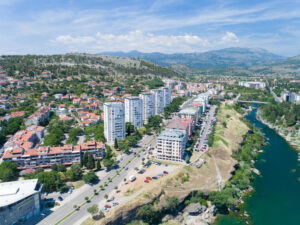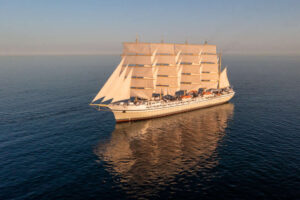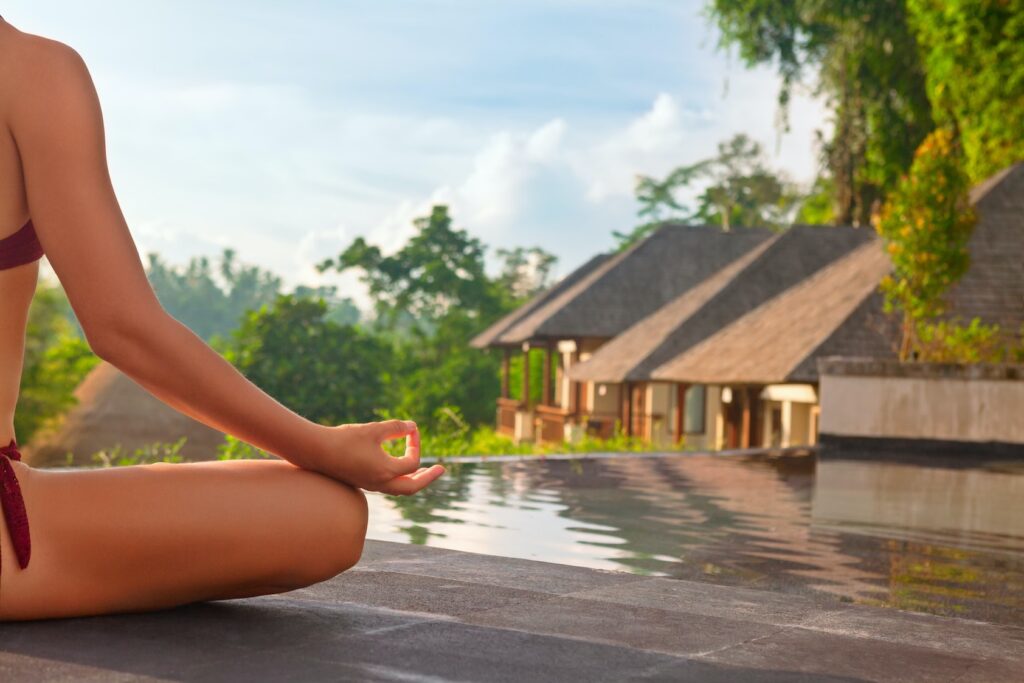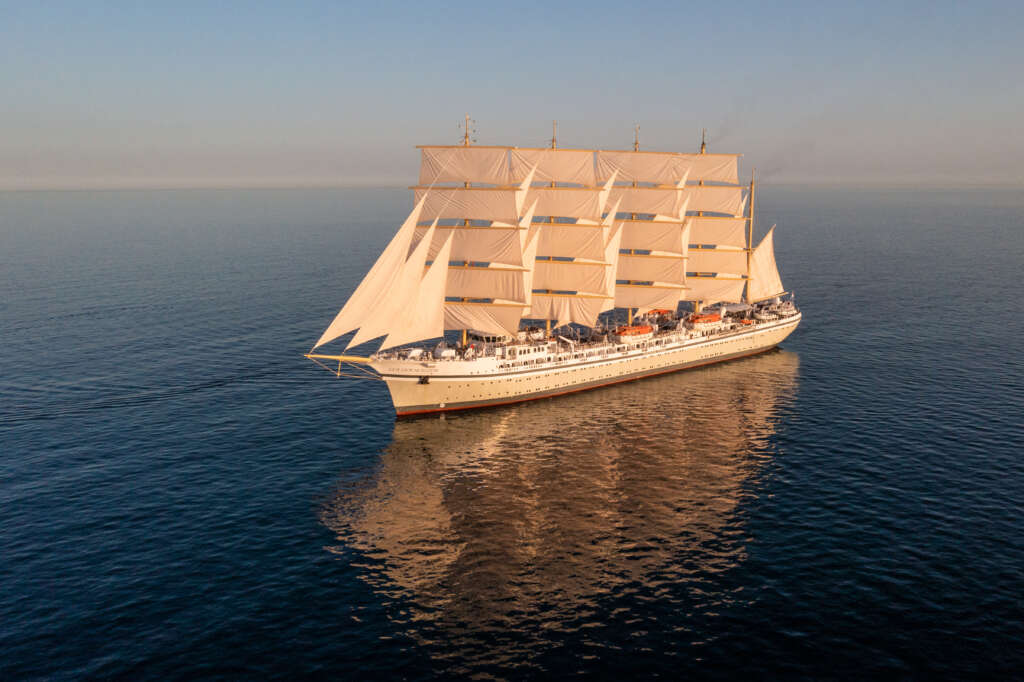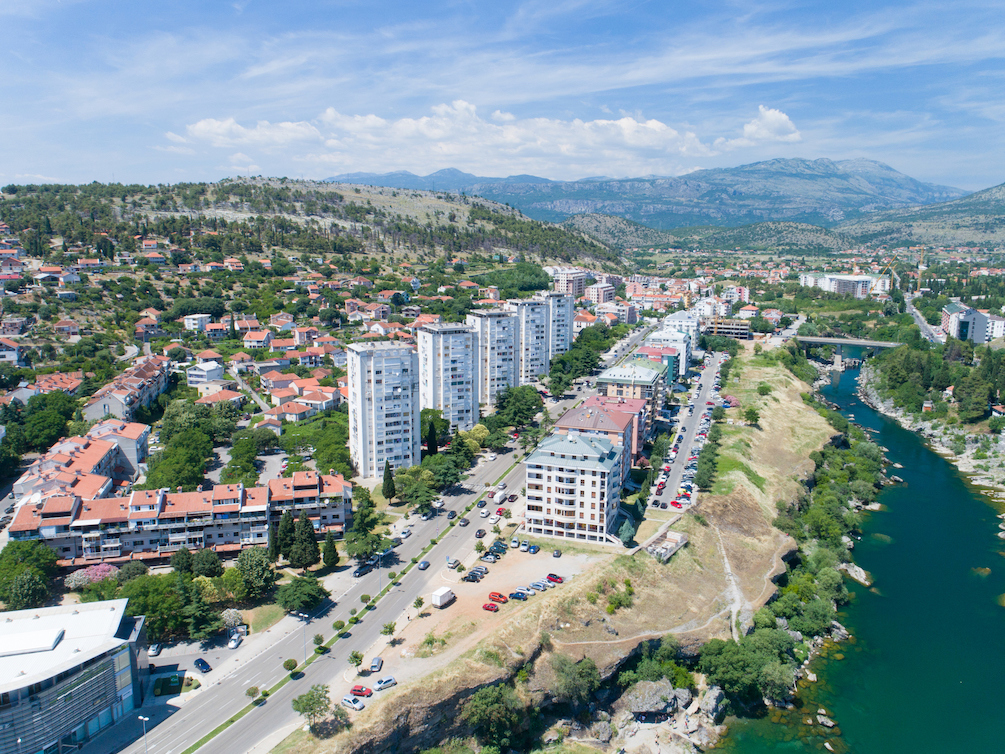Montenegro
Boasting spectacular mountainous landscapes and panoramic sights, Montenegro is ideal for road trips, adventure sports, and reveling in the splendor of nature.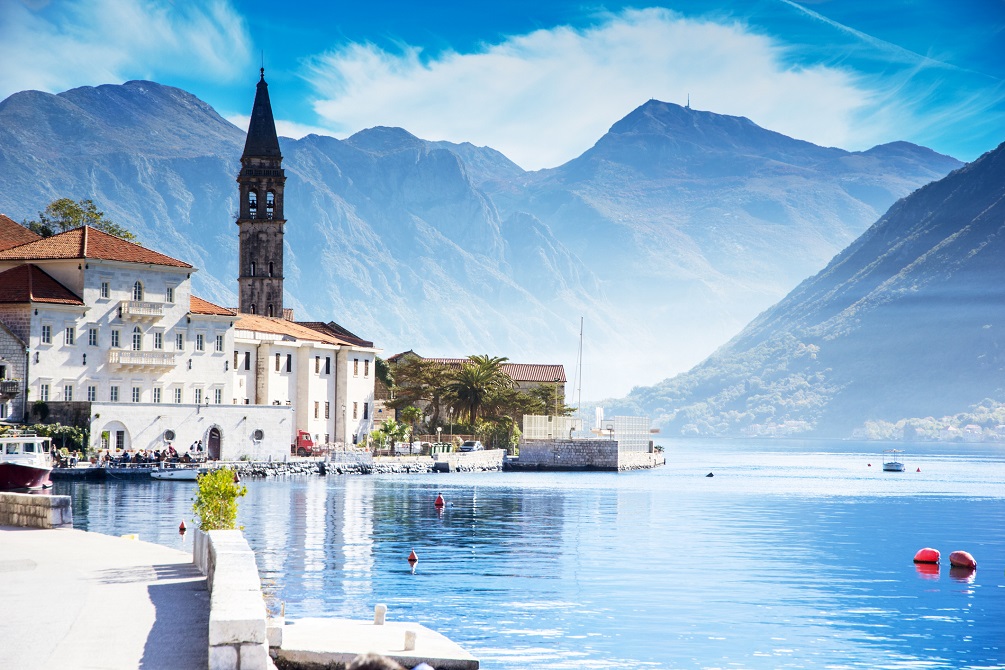
Montenegro is one of Eastern Europe’s gems, sharing borders with Serbia, Kosovo, Bosnia, Albania, and Croatia. Mount Lovćen inspired the country’s name, which stands for ‘Black Mountain’ in English. It’s one of many mountains in Montenegro’s rugged terrain and vibrant natural landscapes.
Montenegro is a haven for nature and adventure lovers. You can hike across the country’s mountains and marvel at its natural beauty, or take a road trip to soak in the stunning sights in one go. The Adriatic Sea lies along Montenegro, allowing for pleasant summers and mild, rainy winters. Every season brings a new pastime to the country, from skiing in the winter to hiking in the spring.
Montenegro is home to a diverse ethnic mix, with Montenegrins and Serbs making up most of the population. Montenegrin is the native language, which bears some similarities to Serbian. And the largest religious groups in the country are Muslims and Christians. Montenegrins are courteous and pleasant people who never fail to make guests feel welcome.
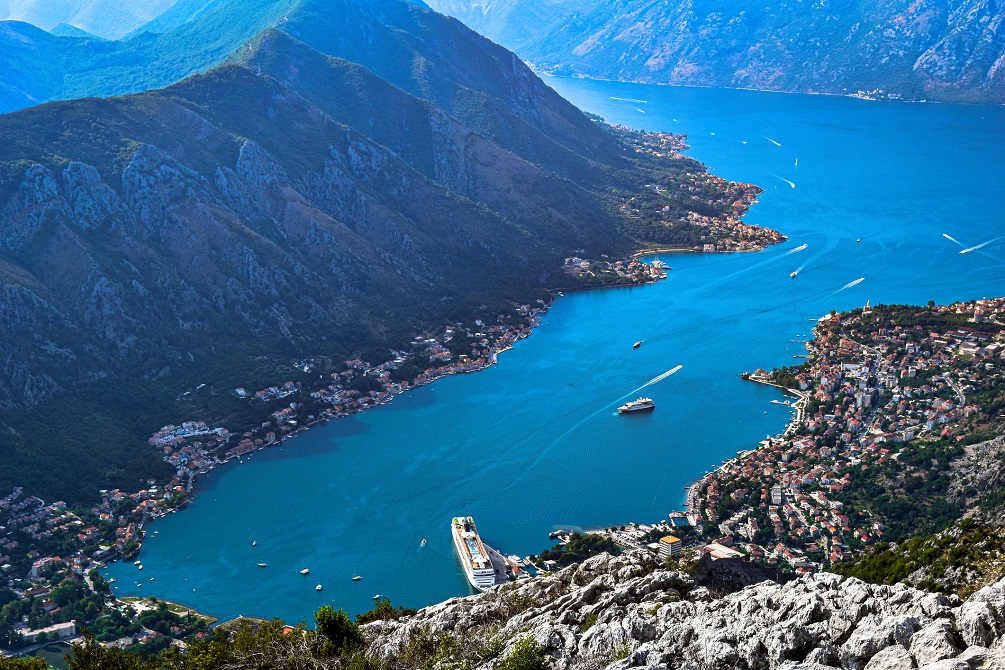


Montenegro is situated beside the Adriatic Sea and on the Balkan Peninsula in Southeastern Europe.
Serbia is its neighbor to the northeast, Kosovo, and Albania to the southeast, Bosnia to the north, and Croatia and the Adriatic Sea to the southwest.
The country has a rugged landscape, with steep crests along the borders of Serbia, Kosovo, and Albania, a karst region of the Balkan Peninsula, and a narrow coastal plain.
As you travel north, the coastal plain thins out until it totally vanishes where Mount Lovćen and other peaks rise abruptly from the Gulf of Kotor’s inlet.
Karst, a terrain formed by the dissolution of soluble rocks such as limestone and gypsum, dominates the southeast. Cetinje, Montenegro’s cultural capital, is located here and is surrounded by barren hills.
Grassy highlands and vast forests make up the eastern regions, which include a section of the Dinaric Alps.
Several rivers flow through Montenegro; the Lim, Piva, and Tara, and rivers run towards the north and the Zeta and Morača rivers to the south.
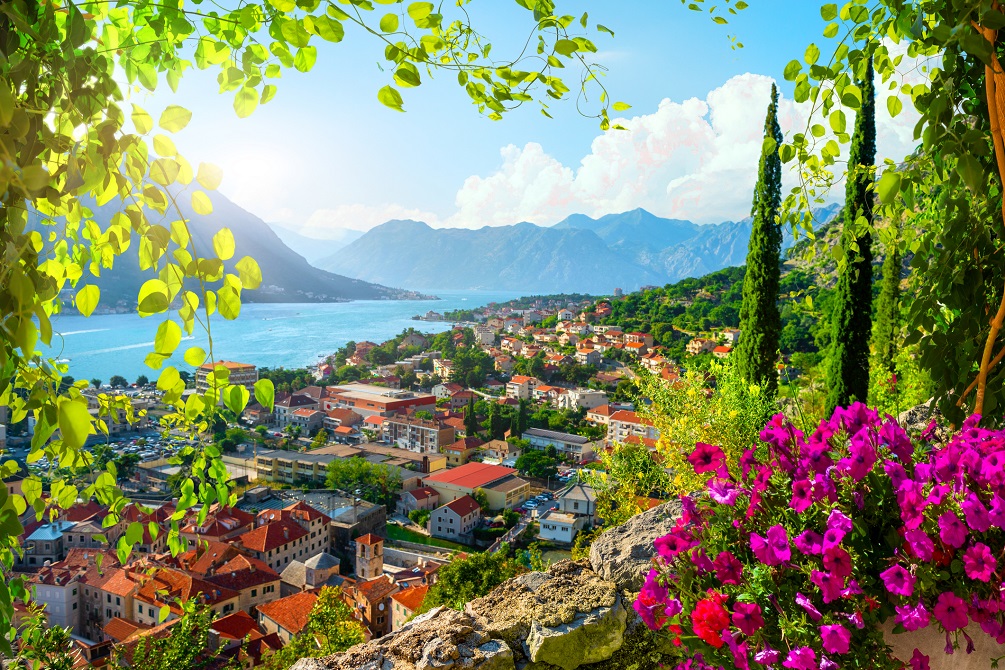


The lower regions of Montenegro have a Mediterranean climate. Summers are warm, while winters are mild with rainy weather.
Temperatures differ at higher and lower elevations because of Montenegro’s rugged terrain.
July is the hottest month in the capital, Podgorica. The average temperature is 27 °C (81 °F).
Cetinje has an average temperature of 22 °C (72 °F).
On the southern coast where Bar lies, the average January temperature is 8 °C (46 °F). And in the northern mountains, temperatures can drop as low as −3 °C (27 °F).
The summer months of June through August are long and warm. It’s the best time to go swimming, immerse yourself in the country’s culture, or enjoy the nightlife.
Autumn (September through November) provides lovely weather and a sense of calm that no other season can match. This season is ideal for visits to the virgin forest of Biogradska Gora and Biogradsko Lake.
It’s also less crowded during autumn, allowing you to soak in the gentle, vibrant shades of the season.
In winter (December through March), mountaintops are blanketed with snow, and carnival festivals pop up around the country. Winter is the best time to visit Montenegro for skiing, snowboarding, and sleigh riding.
In the spring (March through May), mornings and evenings are cool. It’s the best time to visit Montenegro for outdoor activities, hiking, and kayaking. It’s also the perfect time to indulge in honey, wine, and cheese.
It rains more frequently throughout the colder months of the year. And compared to other parts of the country, the mountains receive the most precipitation.
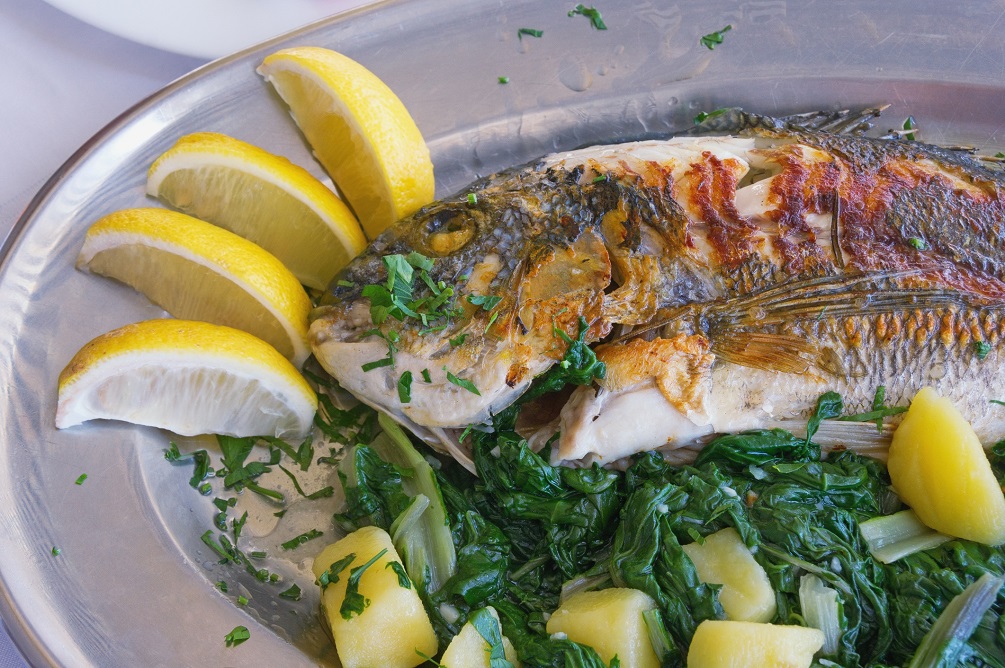


The gastronomy of Montenegro reflects the country’s diverse nature, long history, and influences from Italy, Turkey, Greece, and Hungary.
You’ll find different popular meals per region as the Montenegrin cuisine varies from the coast to the northern highlands. The coastal region has a Mediterranean cuisine, while the northern parts have oriental dishes.
Fish, olives, and cereals are meal staples. The most commonly prepared fish are barbun, zubatac, and sardine. These salt-water fish are often fried, boiled, or grilled.
In the northern mountainous areas, you can indulge in traditional lamb dishes, venison, and meals that comprise sour milk.
A traditional Montenegrin dish is Balšića tava. It’s made with veal that’s boiled with onions and carrots and then covered in a delectable sauce.
Some other must-try meals are cicvara (a porridge made from corn flour and cheese), smoked sardines, and čorbast pasulj (a bean soup served with dried or smoked meat and ribs).
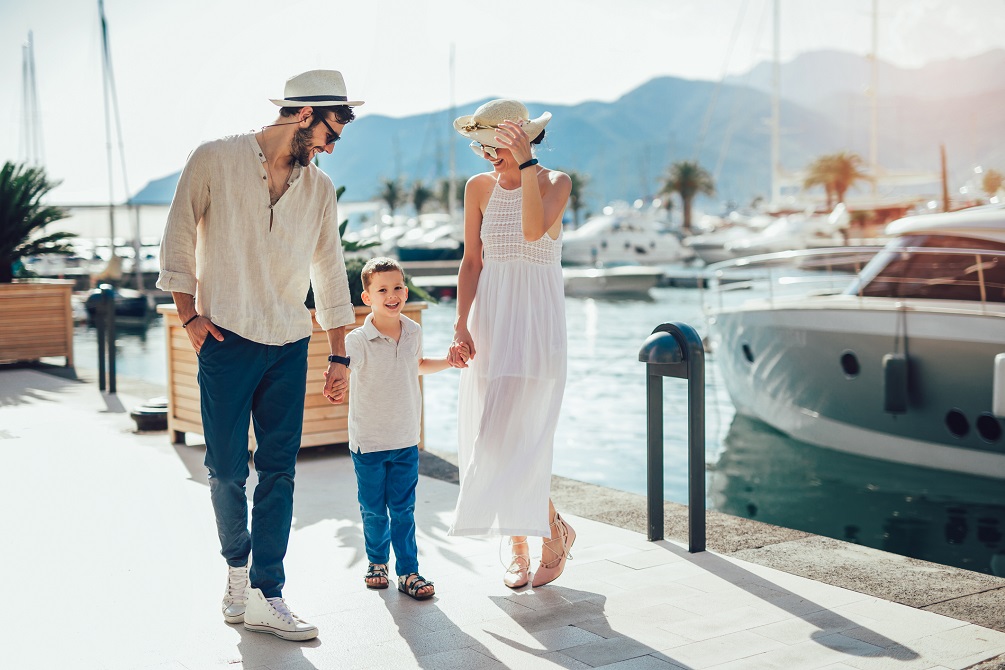


In summer, light, breathable clothing is best. Dress smart-casual at night, and take along a light jacket or a wrap to protect yourself from mosquitos.
Comfortable shoes are necessary when venturing into the mountains.
Also, the mountainous regions are much colder in winter, so bring along a thick jacket, gloves or mittens, hats, and boots with rubber soles.
It’s best to layer your clothing if you’re moving to an area at a lower elevation, so you can peel off garments when it gets warmer.
If you’re going to the beach, you can wear any swimwear you like. A sarong or kaftan can be worn with the beachwear.
Waterproof clothing is best during winter, especially if you’re by the Adriatic coast during the months of November, December, and January.
Make sure to pack long-sleeved garments and pants that reach below the knee if you plan to visit a mosque or a church. Your shoulders and legs should always be covered in this case.



The euro (EUR) is used to pay for all goods and services in Montenegro. One euro is split into 100 cents.
Banknotes are in quantities of 5, 10, 20, 50, 100, 200, and 500 euros. The 200 and 500 euro notes aren’t used or accepted as often as the rest.
There are also EUR 1 and EUR 2 coins. Cents come in 1, 2, 5, 10, 20, 50 coins.
You can exchange your money for the local currency at a bank or an exchange office.
Cash is preferred over credit, so you may need money on hand. You can find an ATM in almost every town in the country, but you may get large bills. Make sure you split large bills to pay at markets and small eateries.
The most widely accepted credit cards are Visa, Visa Electron, MasterCard, and Maestro. Most large restaurants and supermarkets accept credit cards as a means of payment.
Five languages have official status in Montenegro, namely Montenegrin, Croatian, Serbian, Bosnian, and Albanian.
There aren’t great linguistic differences between Montenegrin, Serbian, Croatian, and Bosnian since they’re all derived from the Serbo-Croatian language family.
Despite the similarity, Montenegrin pronunciation is closer to Croatian rather than to Serbian.
While Montenegro has become a famous tourist destination, with English being spoken in some regions, learning the local language can make your trip much more enjoyable.
Here are some common Montenegrin words and phrases and their pronunciations to get you started:
- Hello – Zdravo (ZDRAH-voh)
- Good Day – Dobar Dan (do-BAR dan)
- Goodbye – Doviđenja (doh-vee-JEH-nyah)
- Good night – laku noč (LAH-kuh noch)
- Where is x? – Gde je x? (GD-yeh yeh x?)
- How much does it cost? – Koliko je košta? (KOH-lee-koh ye KOH-shta?)
- Thank you – Hvala (HVAH-lah)
- Please – Molim (MO-leem)
- Yes – Da
- No – Ne
- Excuse me – Izvini (EEZ-vee-nee)
- Sorry – Izvinite (EEZ-vee-nee-the)
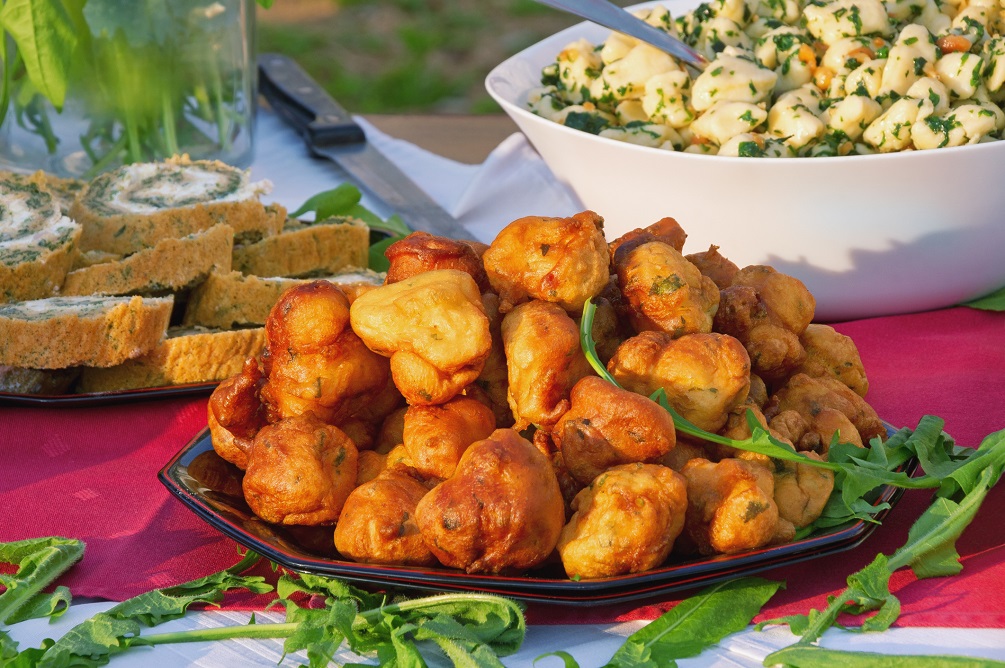


Various influences throughout history have shaped Montenegrin culture. The Mediterranean, Central European, Orthodox, Ottoman (Turk), and Slavic cultures were the most influential.
Native Montenegrins make up almost half of the population. Smaller groups include the Serbs, Bosniaks, Albanians, and Croats.
The capital, Podgorica, and Cetinje are the cultural epicenters of Montenegro, so if you’re a history buff, these cities are worth the visit.
Because Montenegro has long been at the crossroads of different cultures, Muslims and Christians coexist together. Serbian Orthodox Christianity is the most commonly observed religion in the country. And Islam is the second-largest religion.
Water polo is the most popular and national sport in Montenegro. There are other team sports played in the country, such as football and volleyball.
Being hospitable to guests is inherent to Montenegrins. Guests are offered priganice (Montenegrin doughnuts) with honey and rakija (local brandy) as a way to welcome them.
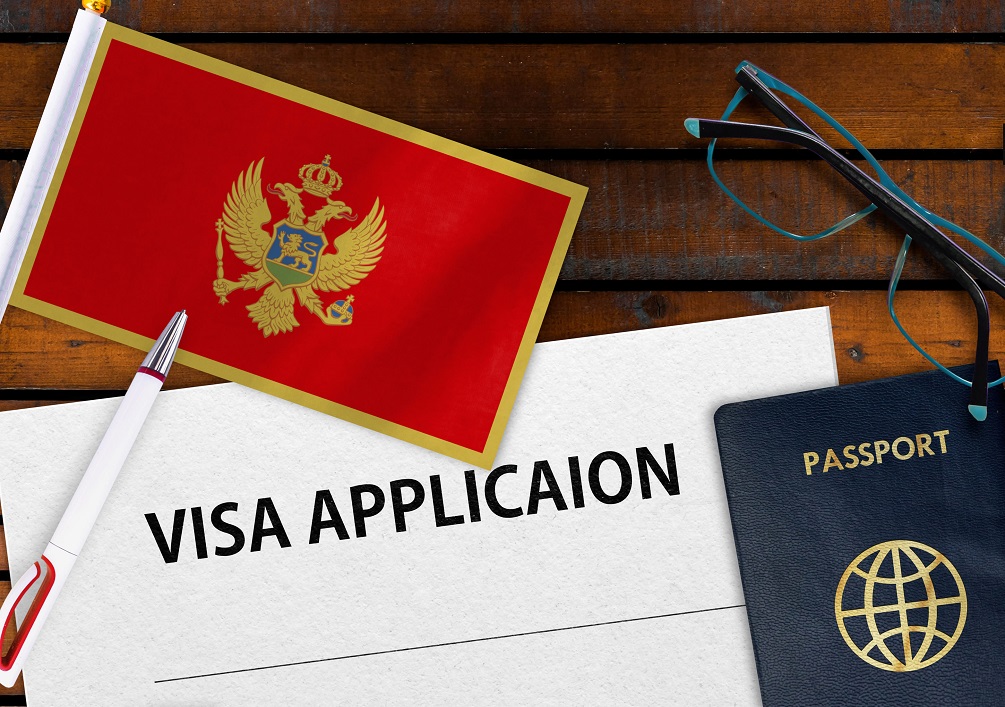


British citizens can enter Montenegro without a visa on the condition that their stay isn’t longer than 90 days.
Make sure that your passport is stamped before leaving border control. This will be necessary to verify how long you stayed in the country.
If you’re in the UK, visit the Montenegrin Embassy before leaving for Montenegro to find out what visa you may need.
For stays longer than 90 days, you’ll need to apply for a visa or a temporary residence permit at the Montenegro Ministry of Interior Affairs. You should file your application no later than one week before the 90-day period ends.
You should ensure your passport is undamaged. Also, it should not be older than 10 years and it must be valid for at least 3 months from the date you intend to leave Montenegro.
If you’re not staying in a hotel or other commercial accommodation, you’ll have to register with the local police or a tourism agency in the town where you’ll be residing.
You should register within 24 hours of arriving in Montenegro or else you might face a fine, detention or a court appearance.
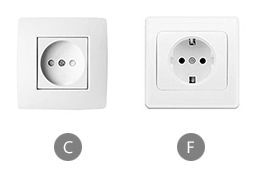


The plugs used in Montenegro are Type C (flat with two round pins) and Type F (circular with two round pins and two earth clips on the side).
Sockets supply a standard voltage of 230 V and a standard frequency of 50 Hz.
Make sure to bring along a travel adapter and a converter for hot tools and hairdryers.



Montenegro is one of Eastern Europe’s gems, sharing borders with Serbia, Kosovo, Bosnia, Albania, and Croatia. Mount Lovćen inspired the country’s name, which stands for ‘Black Mountain’ in English. It’s one of many mountains in Montenegro’s rugged terrain and vibrant natural landscapes.
Montenegro is a haven for nature and adventure lovers. You can hike across the country’s mountains and marvel at its natural beauty, or take a road trip to soak in the stunning sights in one go. The Adriatic Sea lies along Montenegro, allowing for pleasant summers and mild, rainy winters. Every season brings a new pastime to the country, from skiing in the winter to hiking in the spring.
Montenegro is home to a diverse ethnic mix, with Montenegrins and Serbs making up most of the population. Montenegrin is the native language, which bears some similarities to Serbian. And the largest religious groups in the country are Muslims and Christians. Montenegrins are courteous and pleasant people who never fail to make guests feel welcome.



Montenegro is situated beside the Adriatic Sea and on the Balkan Peninsula in Southeastern Europe.
Serbia is its neighbor to the northeast, Kosovo, and Albania to the southeast, Bosnia to the north, and Croatia and the Adriatic Sea to the southwest.
The country has a rugged landscape, with steep crests along the borders of Serbia, Kosovo, and Albania, a karst region of the Balkan Peninsula, and a narrow coastal plain.
As you travel north, the coastal plain thins out until it totally vanishes where Mount Lovćen and other peaks rise abruptly from the Gulf of Kotor’s inlet.
Karst, a terrain formed by the dissolution of soluble rocks such as limestone and gypsum, dominates the southeast. Cetinje, Montenegro’s cultural capital, is located here and is surrounded by barren hills.
Grassy highlands and vast forests make up the eastern regions, which include a section of the Dinaric Alps.
Several rivers flow through Montenegro; the Lim, Piva, and Tara, and rivers run towards the north and the Zeta and Morača rivers to the south.



The lower regions of Montenegro have a Mediterranean climate. Summers are warm, while winters are mild with rainy weather.
Temperatures differ at higher and lower elevations because of Montenegro’s rugged terrain.
July is the hottest month in the capital, Podgorica. The average temperature is 27 °C (81 °F).
Cetinje has an average temperature of 22 °C (72 °F).
On the southern coast where Bar lies, the average January temperature is 8 °C (46 °F). And in the northern mountains, temperatures can drop as low as −3 °C (27 °F).
The summer months of June through August are long and warm. It’s the best time to go swimming, immerse yourself in the country’s culture, or enjoy the nightlife.
Autumn (September through November) provides lovely weather and a sense of calm that no other season can match. This season is ideal for visits to the virgin forest of Biogradska Gora and Biogradsko Lake.
It’s also less crowded during autumn, allowing you to soak in the gentle, vibrant shades of the season.
In winter (December through March), mountaintops are blanketed with snow, and carnival festivals pop up around the country. Winter is the best time to visit Montenegro for skiing, snowboarding, and sleigh riding.
In the spring (March through May), mornings and evenings are cool. It’s the best time to visit Montenegro for outdoor activities, hiking, and kayaking. It’s also the perfect time to indulge in honey, wine, and cheese.
It rains more frequently throughout the colder months of the year. And compared to other parts of the country, the mountains receive the most precipitation.



The gastronomy of Montenegro reflects the country’s diverse nature, long history, and influences from Italy, Turkey, Greece, and Hungary.
You’ll find different popular meals per region as the Montenegrin cuisine varies from the coast to the northern highlands. The coastal region has a Mediterranean cuisine, while the northern parts have oriental dishes.
Fish, olives, and cereals are meal staples. The most commonly prepared fish are barbun, zubatac, and sardine. These salt-water fish are often fried, boiled, or grilled.
In the northern mountainous areas, you can indulge in traditional lamb dishes, venison, and meals that comprise sour milk.
A traditional Montenegrin dish is Balšića tava. It’s made with veal that’s boiled with onions and carrots and then covered in a delectable sauce.
Some other must-try meals are cicvara (a porridge made from corn flour and cheese), smoked sardines, and čorbast pasulj (a bean soup served with dried or smoked meat and ribs).



In summer, light, breathable clothing is best. Dress smart-casual at night, and take along a light jacket or a wrap to protect yourself from mosquitos.
Comfortable shoes are necessary when venturing into the mountains.
Also, the mountainous regions are much colder in winter, so bring along a thick jacket, gloves or mittens, hats, and boots with rubber soles.
It’s best to layer your clothing if you’re moving to an area at a lower elevation, so you can peel off garments when it gets warmer.
If you’re going to the beach, you can wear any swimwear you like. A sarong or kaftan can be worn with the beachwear.
Waterproof clothing is best during winter, especially if you’re by the Adriatic coast during the months of November, December, and January.
Make sure to pack long-sleeved garments and pants that reach below the knee if you plan to visit a mosque or a church. Your shoulders and legs should always be covered in this case.



The euro (EUR) is used to pay for all goods and services in Montenegro. One euro is split into 100 cents.
Banknotes are in quantities of 5, 10, 20, 50, 100, 200, and 500 euros. The 200 and 500 euro notes aren’t used or accepted as often as the rest.
There are also EUR 1 and EUR 2 coins. Cents come in 1, 2, 5, 10, 20, 50 coins.
You can exchange your money for the local currency at a bank or an exchange office.
Cash is preferred over credit, so you may need money on hand. You can find an ATM in almost every town in the country, but you may get large bills. Make sure you split large bills to pay at markets and small eateries.
The most widely accepted credit cards are Visa, Visa Electron, MasterCard, and Maestro. Most large restaurants and supermarkets accept credit cards as a means of payment.
Five languages have official status in Montenegro, namely Montenegrin, Croatian, Serbian, Bosnian, and Albanian.
There aren’t great linguistic differences between Montenegrin, Serbian, Croatian, and Bosnian since they’re all derived from the Serbo-Croatian language family.
Despite the similarity, Montenegrin pronunciation is closer to Croatian rather than to Serbian.
While Montenegro has become a famous tourist destination, with English being spoken in some regions, learning the local language can make your trip much more enjoyable.
Here are some common Montenegrin words and phrases and their pronunciations to get you started:
- Hello – Zdravo (ZDRAH-voh)
- Good Day – Dobar Dan (do-BAR dan)
- Goodbye – Doviđenja (doh-vee-JEH-nyah)
- Good night – laku noč (LAH-kuh noch)
- Where is x? – Gde je x? (GD-yeh yeh x?)
- How much does it cost? – Koliko je košta? (KOH-lee-koh ye KOH-shta?)
- Thank you – Hvala (HVAH-lah)
- Please – Molim (MO-leem)
- Yes – Da
- No – Ne
- Excuse me – Izvini (EEZ-vee-nee)
- Sorry – Izvinite (EEZ-vee-nee-the)



Various influences throughout history have shaped Montenegrin culture. The Mediterranean, Central European, Orthodox, Ottoman (Turk), and Slavic cultures were the most influential.
Native Montenegrins make up almost half of the population. Smaller groups include the Serbs, Bosniaks, Albanians, and Croats.
The capital, Podgorica, and Cetinje are the cultural epicenters of Montenegro, so if you’re a history buff, these cities are worth the visit.
Because Montenegro has long been at the crossroads of different cultures, Muslims and Christians coexist together. Serbian Orthodox Christianity is the most commonly observed religion in the country. And Islam is the second-largest religion.
Water polo is the most popular and national sport in Montenegro. There are other team sports played in the country, such as football and volleyball.
Being hospitable to guests is inherent to Montenegrins. Guests are offered priganice (Montenegrin doughnuts) with honey and rakija (local brandy) as a way to welcome them.



British citizens can enter Montenegro without a visa on the condition that their stay isn’t longer than 90 days.
Make sure that your passport is stamped before leaving border control. This will be necessary to verify how long you stayed in the country.
If you’re in the UK, visit the Montenegrin Embassy before leaving for Montenegro to find out what visa you may need.
For stays longer than 90 days, you’ll need to apply for a visa or a temporary residence permit at the Montenegro Ministry of Interior Affairs. You should file your application no later than one week before the 90-day period ends.
You should ensure your passport is undamaged. Also, it should not be older than 10 years and it must be valid for at least 3 months from the date you intend to leave Montenegro.
If you’re not staying in a hotel or other commercial accommodation, you’ll have to register with the local police or a tourism agency in the town where you’ll be residing.
You should register within 24 hours of arriving in Montenegro or else you might face a fine, detention or a court appearance.



The plugs used in Montenegro are Type C (flat with two round pins) and Type F (circular with two round pins and two earth clips on the side).
Sockets supply a standard voltage of 230 V and a standard frequency of 50 Hz.
Make sure to bring along a travel adapter and a converter for hot tools and hairdryers.
Travel related news, information and inspirational articles and videos for travellers booking flights or holidays to Montenegro. Ask questions about travel in Montenegro and get answers from Montenegro experts
NEWS
Inspiration, Information and Travel Guides
MEET THE Montenegro EXPERTS
If you are looking to book a holiday to Montenegro or needs some help and advice planning travel to Montenegro then contact one of the UK based independent travel agents that specialise in Montenegro itineraries.
FEATURED VIDEOS
Your Travel Questions Answered
Ask any travel related question and get an answer from one of our experts that will provide you with an answer from their personal experience
There is no question for this category.

